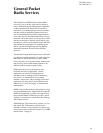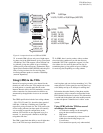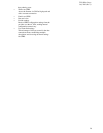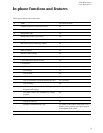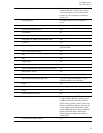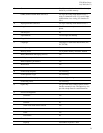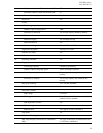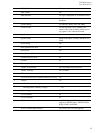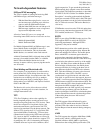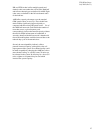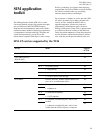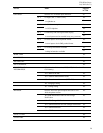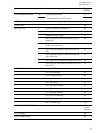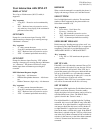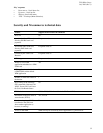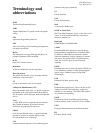T226 White Paper
July 2003 (Rev C)
26
Network-dependent features
SMS and EMS messaging
The T226 is capable of sending and receiving SMS
and EMS messages, and linked messages.
• With the Short Messaging Service, a user can
send text messages containing up to 160 char-
acters to and from GSM mobile stations
• With the linked SMS, the user can link up to 10
SMS messages together to create a longer mes-
sage (network-dependent service)
A Service Center (SC) acts as a a storage and
forwarding center. SMS consists of two basic services:
• Mobile Originated SMS
• Mobile Terminated SMS
For Mobile Originated SMS, an SMS message is sent
from a Mobile Station to the SMS-C where it is
forwarded to its destination. This can be another
Mobile Station, or a terminal in the fixed network.
A Mobile Terminated SMS is delivered when an SMS
message is forwarded from the SMS-C to a Mobile
Station. When the Mobile Station receives the
message, it returns a delivery report saying the transfer
was successful.
Fixed dialing and Restricted calls
For a company or an organization, it can be useful to
restrict phone calls. Fixed dialing allows the user to
preset a number of digits, for example area codes. This
restricts the user to making calls only to numbers
which use the preset digits as leading digits. Fixed
dialing makes use of the PIN2, and requires fixed dial
fields on the SIM card.
The Restrict calls service allows the user to block
outgoing or incoming calls in certain situations, for
example international calls.
TTY
TTY (Text Telephony) refers to the capability for
hearing impaired people to trasmit and receive text
messages using teletype devices (TTY devices). These
devices are composed of a keyboard, display, and
modem that transforms typed characters into TTY
signals to be transferred over the phone network. The
standard TTY signal in the U.S. is a 45.45 bit/s FSK
signal called Baudot. Traditionally, TTY users have
communicated over the analog PSTN network. In the
U.S., however, the FCC mandated that as of June 30,
2002 digital mobile systems should also support TTY
for emergency 911 calls. Unfortunately, the integrity
of Baudot decreases in poor radio conditions, due to
signal compression. To get around this problem, the
GSM standards body adopted a more robust modem
signal called CTM (cellular text modem), as described
in 3 GPP TS 26.226 “Cellular Text Modem; General
Description”. According to the standard, the Baudot
signal gets converted to CTM, and it is the CTM signal
that gets transmitted over the air. In the infrastructure
side, a CTM node converts CTM back to Baudot (or
vice versa).
CTM/Baudot conversion on the T226 side takes place
in an accessory that interfaces between the T226 (with
TTY enabled) and the user’s TTY device.
EOTD
EOTD is part of the GSM R99 location services. The
T226 supports EOTD to satisfy the FCC E911
positioning requirements. Although EOTD is
supported, it may not be enabled.
EOTD determines position of the mobile phone by
measuring the signal propagation delay between the
phone and multiple base stations. The mobile phone
knows which BTS’s to measure against based on
assistance data contained in the Measure Position
Request received from the network. Some BTS’s may
even be below the reference sensitivity of the mobile
phone (-110 dBm). Since neither the phone nor BTS
has knowledge of absolute time, the mobile phone
measures time delay by looking at the burst arrival
time differences between each BTS and a reference
BTS. This time difference is known as the observed
time difference value (OTD). The BTS’s are not
synchronized in a typical network, and suffer from
clock drift. A special device in the network, known as
an LMU, is used to measure the Real Time Difference
(RTD) between each BTS and the reference BTS. The
network takes the OTD values from the mobile phone,
interpolates the RTD from the LMU at the
measurement time (the LMU typically only measures
each BTS once per minute), and uses the known
location and height of each BTS to calculate the phone
position. Because the network calculates the position
of the mobile phone, the term “MS-assisted”
positioning is used.
The T226 supports Network Induced Location
Request (NI-LR) which means that the T226 will
calculate OTD values when it receives a Measure
Position Request from the network during emergency
calls.
AMR
The T226 supports the Adapative Multi-Rate (AMR)
speech codec, which is a GSM speech service
specified in Release 98/99. AMR is significantly
different from the existing GSM speech codecs (FR,



